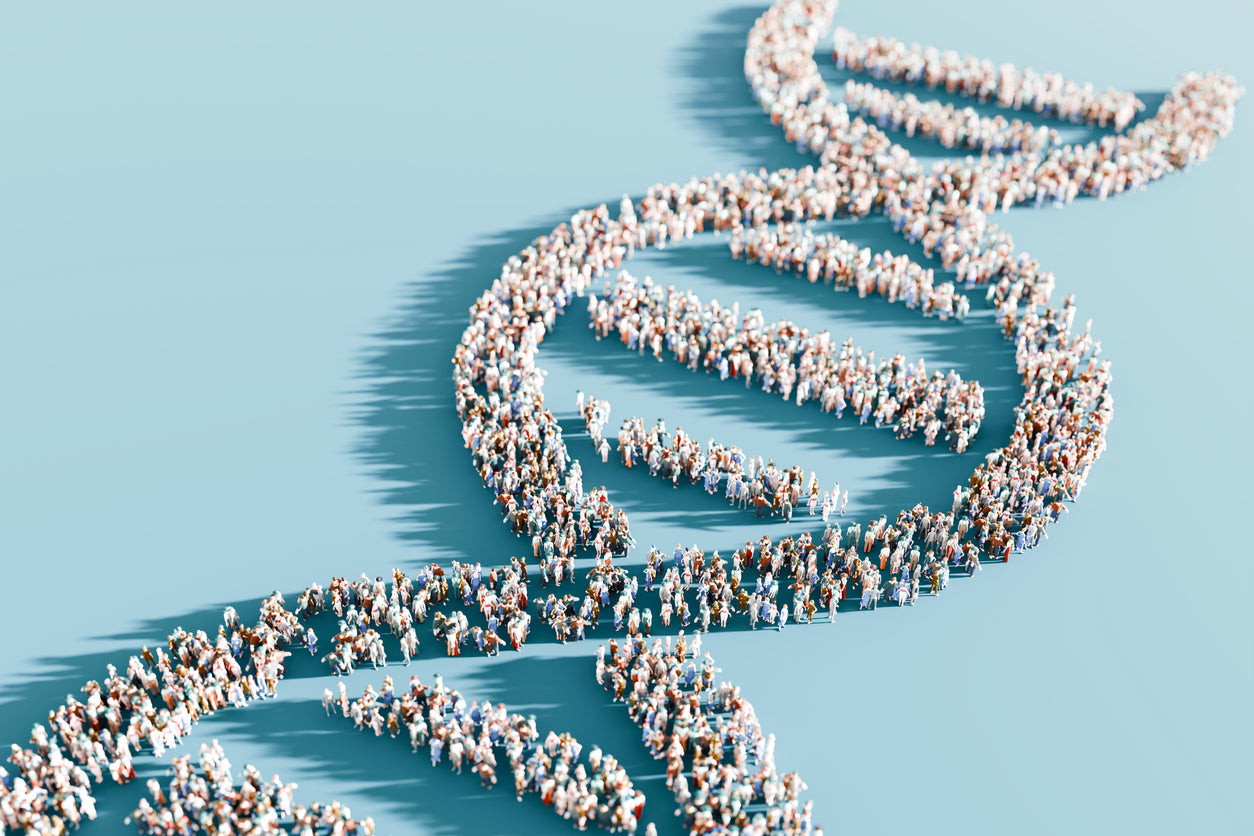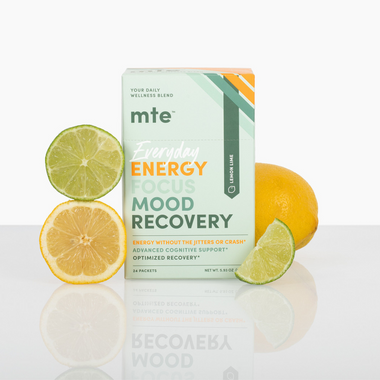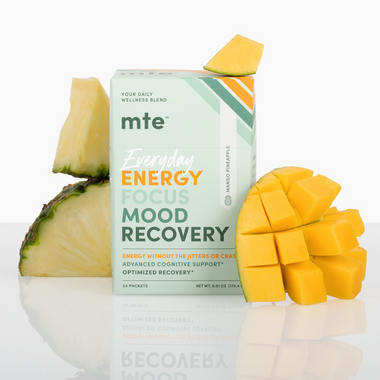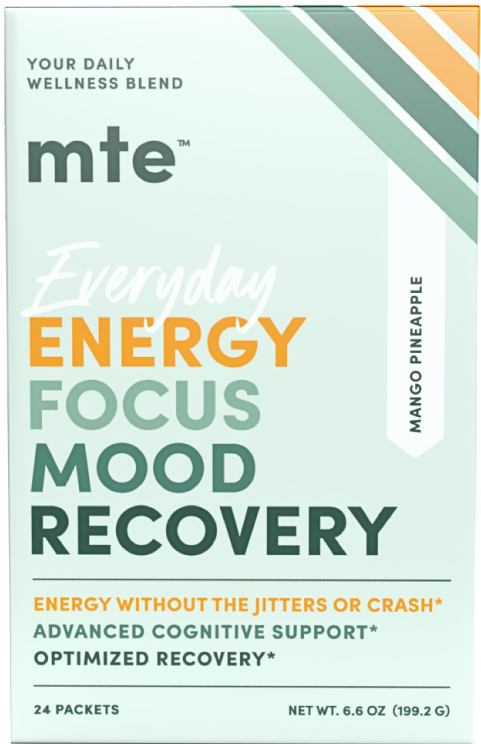
Biohacking & Epigenetics: Getting into the Science Behind the Buzzword
The wellness space is full of jargon that sometimes seems almost a satire – “quantum healing”, anyone? Crowded product aisles, influencers and endless targeted ads on your insta, and a TikTok for the most obscure concepts and products make sussing out what’s an actual signal and what’s just noise. Recently, we’ve been hearing a lot about “changing your DNA” and “hacking your genes”. Seems like science fiction, right? DIY geneticists aren’t really a thing; you have to, like, go to school for that.
“Biohacking” is a sort of DIY genetics term that’s been around for a while. Die-hards believe in the ability to literally change your biology – hence the term. Skeptics think it’s just another empty, passing fad. The problem is, it’s neither; the human body is much more complex than that. The interesting thing is that biohacking actually has some basis in our biology through something called epigenetics. So, in yet another MTE deep dive into the intersection between hype and human biology (can’t stop, won’t stop ✌️), let’s talk about epigenetics!
Nature vs Nurture: What is Epigenetics?
We love a little bit of etymology. The “epi” in epigenetics comes from a Greek root that means “over”, “on top of”, or “next to”. Basically, the word means “in addition to genetics”. It’s the idea that life circumstances, habits, and health can all affect how genes are expressed.
A Tiny Primer on Genetics
Everyone is born with a set genetic code, referred to as their genome. We usually have two copies of each gene – one from each parent. About 20,000 of these genes contain instructions for producing proteins. These proteins act as signals that control if, when, and how genes are expressed.
Every gene is made up of a chunk of DNA set in a certain sequence and tagged with a methylation pattern that determines whether or not the gene is expressed. Between any two people, our actual DNA is 99.5% to 99.9% the same. Basically, only 1 out of every 1000 base pairs is different. Where most of our genetic variation comes from is alleles, which are small variations and/or mutations in the DNA sequence in a gene. Alleles are responsible for our unique physical features, inside and out.
Some alleles are inarguably harmful, like the variation in the HTT gene that causes Huntington’s Disease. Others are harmful or helpful purely depending on the context. For instance, a certain allele within the HBB gene causes sickle cell anemia. Sickle cell can be an extremely painful condition, but the origins of the mutation are advantageous in areas where malaria is a high risk. As such, we notice populations from genetic groups in tropical and subtropical climates have much higher rates of sickle cell. Genetics is a really complex science!
Understanding Epigenetics
Epigenetics refers to how genes are expressed. It’s the idea that environment, experience, and lifestyle can change and/or protect methylation patterns. It’s kind of like a light board with tens of thousands of switches – some are already on or off, but we have the ability to switch some on or off. Twin studies are how we initially delved into the mystery of why no two people are the same even if they’re genetically the same. If it’s all nature, why isn’t every identical twin exactly the same in look, behavior, personality, etc? Through twin studies, both mystery and discovery resulted:
Schizophrenia: 50% Solved
Finding the etiology of psychotic disorders is one of the most difficult subjects in psychiatric research. Twin studies revealed that if one identical twin has schizophrenia, there’s a 50% chance the other twin will have it, too. In fraternal twins, that chance is 15%. So, while these studies revealed there is a significant genetic component, the fact that the correspondence in people with the exact same DNA is only 50% begs the question of where the other 50% goes.
Multiple Sclerosis: 25% Solved
Progressive degenerative disorders are difficult to treat, so finding origins is key to targeted treatment. Twin studies revealed a 25% co-occurrence in identical twins but only a 5% co-occurrence in fraternal twins. This discovery revealed that while there is a genetic component, the epigenetic factors account for the majority of the cause of MS. What those are is still up for debate, but Vitamin D deficiency and gut microbiome differences have been observed.
Autism Spectrum Disorder: 70% Solved
ASD affects children everywhere, and understanding its causes and mechanisms is important for ensuring these people get the same quality of education and life that neurotypical people do. Twin studies revealed a 70% correspondence between identical twins and only 30% between fraternal, indicating a major hereditary influence, but still hinting that there’s still an epigenetic component or components to find.
Can We Really Change Our DNA? The Truth:
It’s part of the nature vs nurture argument: do we have control “over” our genetics? Or are we relegated purely to the code we’re born with? Twin studies also helped us out with this one, too. Myriad studies on longevity asked why some people live so much longer than others – think Blue Zones. Are people in Blue Zones genetically predisposed to live longer? Or is it the culture and lifestyles in those locations that keeps people alive for 90 or 100+ years?
Twin studies on aging revealed only 20% to 30% correspondence in lifespan between identical twins, indicating about ¾ is determined by environmental factors (epigenetics!). Similarly, studies on twins raised in different environments – usually kids who are adopted separately – showed that their epigenetic markers diverged more and more over time. Experiences – specifically, trauma – seemed to play a major role in these diverging paths.
Science is telling us that we are largely in control of our quality of life – our state of mind, health status, habits, and even lifespan! You’ve got control over many of those switches on your light board. One of the most promising ideas in epigenetics is that we can prevent and even reverse harmful effects from our environment. In a time where we’re exposed to high-stress events, environmental toxins, and processed foods, the potential to buffer against those realities is exciting, to say the least. Enter: biohacking.
“Biohacking” is Just Taking Care of Yourself (& Your Genes)!
Stress is a big focus in biohacking. It’s a huge culprit of chronic inflammation and immunosuppression, both of which can trigger countless allele changes, illnesses, and permanent changes to your DNA. Not to mention that exposure to those environmental and food toxins is even more severe with inflammation and reduced immunity. But interventions like prioritizing sleep, eating well, and leveraging adaptogen stacks and nootropic drinks are a way to chip away at those effects of stress.
You don’t need to live in a minimalist penthouse with a sauna and cryotherapy chamber or get weekly Vitamin C IVs in order to be a biohacker. We need to consider what biohacking really means, which is basically just “pay attention to what your body is telling you and prioritize those things that help you perform at your best while feeling your best.” “Biohacking” is way more catchy – we get it. You can biohack away with some daily habits and a bit of commitment:
What You Can Do
A few examples of how lifestyle directly affects biology include:
- Exercise Regularly: Regular exercise, mainly cardio and resistance training, has been shown to positively alter gene expression in muscle, fat, and brain tissue.
- Avoid/Quit Smoking: Nicotine consumption is known to cause widespread harmful changes in gene expression, increasing risks of chronic diseases.
- Prioritize Sleep Health: Sleep deprivation is associated with chronic inflammation and several irreversible changes in genes controlling the circadian rhythm.
Nutrition is King
It makes sense that what we put in our body matters. There are a few things to consider in your diet when it comes to epigenetics:
- Diets rich in veggies, whole grains, and healthy fats support functional methylation and histone processes, AKA gene function.
- Practicing time-restricted eating or intermittent fasting has been shown to activate genes related to metabolic health and longevity.
- Consuming functional foods like adaptogens and nootropics, which are naturally bioactive, can help detoxify the body and modulate gene expression associated with chronic disease and aging.
Other smart habits that matter include spending time outside, maintaining meaningful social connections, limiting alcohol intake, and managing stress.
How MTE Boosts Your Efforts
We’re all about those functional foods. The adaptogens, nootropics, and superfoods in MTE combine to offer a comprehensive companion to your best biohacking efforts. For instance, adaptogens like ashwagandha promote stress resilience by modulating the HPA axis. The HPA axis is the control center for our stress responses and also plays a major role in cognitive health, mood, and more. These are intricately tied to epigenetic regulation; reduced cortisol levels support healthy gene function.
Or consider nootropics, which are known to support cognitive health, including mood, memory, learning, and focus, as well as energy without the caffeine crash. For instance, nootropics like paraxanthine increase reparative activity in the brain, supporting healthy gene expression by protecting methylation – things that literally protect the integrity of your DNA. Add a few superfoods for a nutrition boost, and with just a couple minutes and 8oz of water, you’ve got a biohacking booster that functions as a stress relief drink, mood boosting drink, productivity supplement, and mood enhancer – all with a simple nootropic and adaptogenic herb blend.






